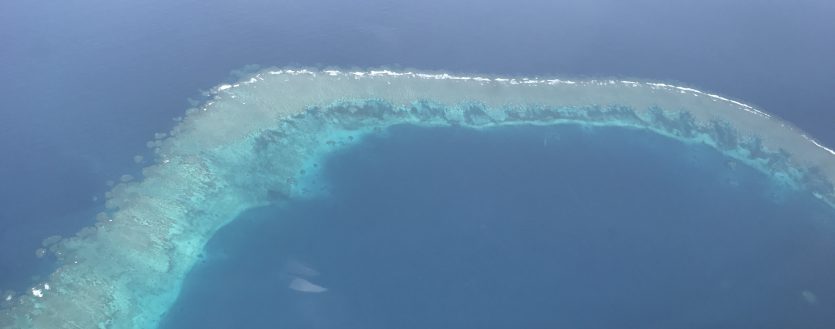
Fiji is on many people’s bucket lists of exotic locals to visit. It’s a beautiful, but fairly impoverished country consisting of 332 islands. In my recent trip to Fiji, I traveled from the main island (Viti Levu) to a smaller island nearby (Vanua Levu) to scuba dive the Namena Reserve. The Namena Reserve and the Somosomo Strait (home of the Rainbow Reef) are two of the best scuba diving destinations in the world.
What to see and do when visiting Fiji
1. Visit the islands – in general, forget about the main island and head out to the other, smaller islands. Nadi (pronounced “Nandi”), Fiji’s capital city, will be a large disappointment for most people. Nature, diving, and a slower more relaxed life all await you outside the main island. The main island has larger towns like Suva and Nadi, but they aren’t very nice at all (especially Suva).
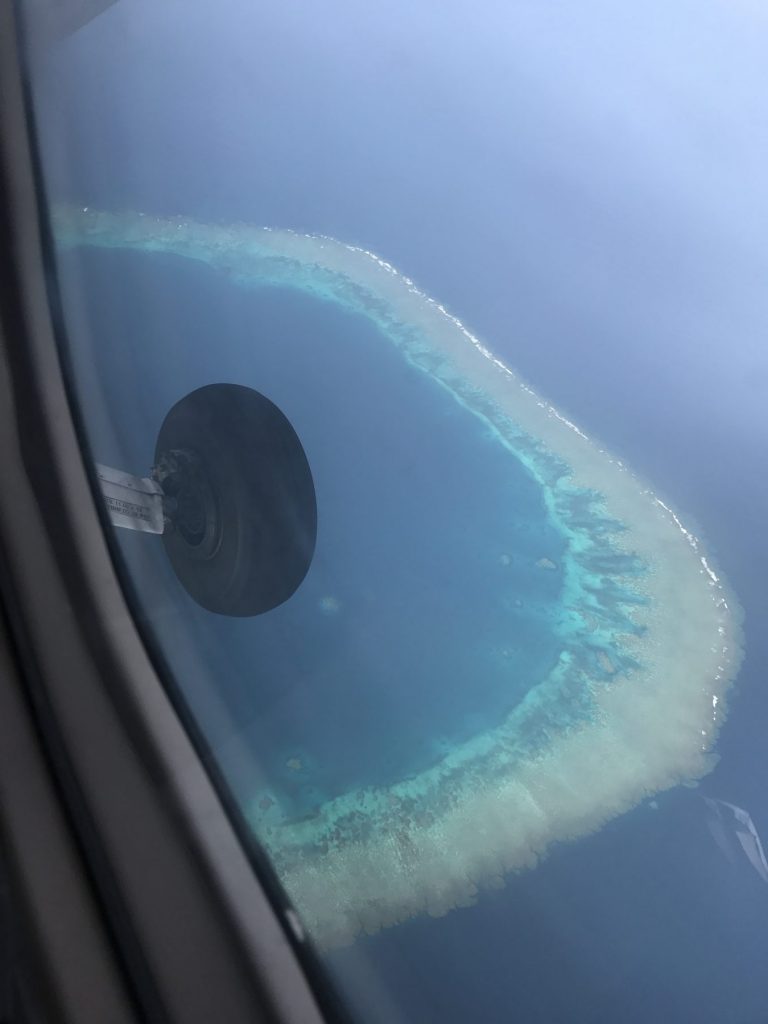
A view from a 20 passenger propeller FijiLink plane en route to Savusavu, Fiji
2. Scuba diving – Fiji has some of the best scuba diving in the world. Rainbow Reef and the Namena Reserve are some of the best spots to dive and are both on the same island. Remember to confirm you reservations just before you leave. One of the meanings of “Fiji time” is that people forget things, intentionally or not. Once under water, all sorts of fish and sea creatures like Giant Groupers, Maori Wrasse, Rainbow Runners, Giant Trevally, Java Morays, Eagle Rays and more than 400 species of tropical reef fish can be found.
3 Whale watching – whales have been protected in Fiji since 2003, when Fijian Government declared Fiji’s Exclusive Economic Zone as a Whale Sanctuary. Whale sightings can take place on many islands including Taveuni, Leleuvia, Gau, and Koro.
4 Swim with sharks – eight species of Sharks: Blacktip Reef Sharks, Whitetip Reef Sharks, Grey Reef Sharks, Silvertip Sharks, Tawny Nurse Sharks, Sicklefin Lemon Sharks, Bull Sharks and the occasional Tiger Shark – can all be found in the waters around Fiji. I met a German college student in Nadi’s center that had fed and dove with bull sharks. Not something I would do without a steel mesh diving suit, but she got through it fine.
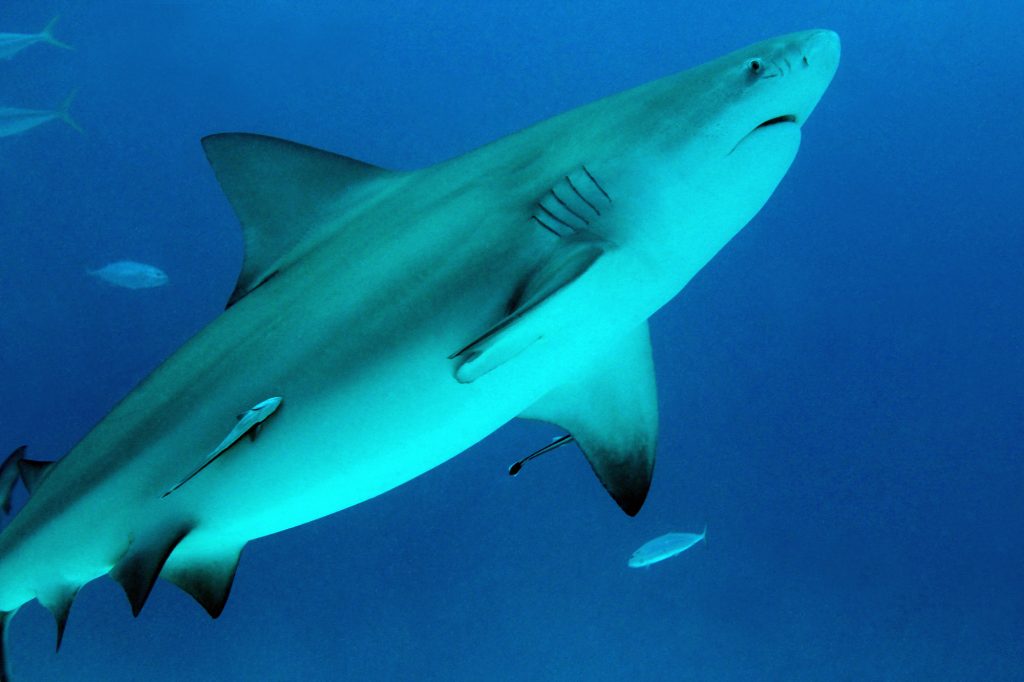
Bull Shark in Fiji
5 Swim with whales – humpback whale breeding season in Tonga, which is June/July through November. Also possible to swim with sperm whales.
What to avoid when visiting Fiji
1 The major hotels in Nadi – the cover photos of their properties in Nadi on the websites of Hilton, SPG, Club Carlson, Wyndam and more might look amazing, but they are not. I walked through most of the major chain hotels and to me, they are fine but definitely not amazing. The hotels guests seem to be almost entirely made up of Aussie and Kiwi (New Zealand) tourist families. The pools of each hotel are pretty average, and are all located in the rear facing the ocean. None of the hotels have pristine beaches, and some don’t have sand for a beach at all. What sand does exist is dark brown, not the light/white sand many expect to see. There are also few people swimming in the ocean. Also, there aren’t food places close by so you’re stuck with paying expensive prices, especially by Fiji standards, at the hotels. The local yellowand hop-on hop-off buses can pick you up and take you to different locations so you’re not entirely trapped, but the whole hotel area along the coast is a tourist trap. Even with a family I don’t get why anyone would travel all that way to stay in those hotels. You can get the same thing or better traveling just by car in many countries.
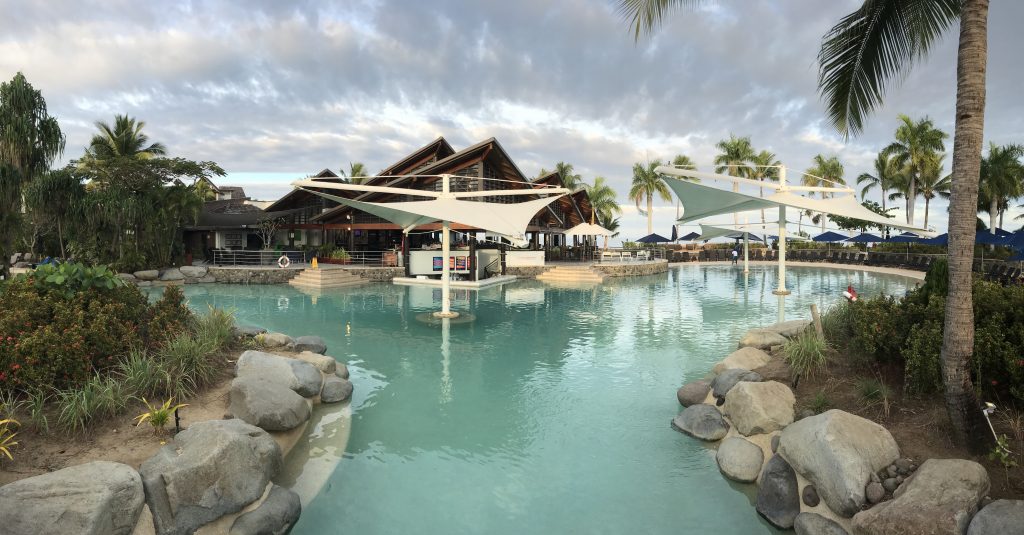
Radisson Blu Resort Fiji Denarau Island
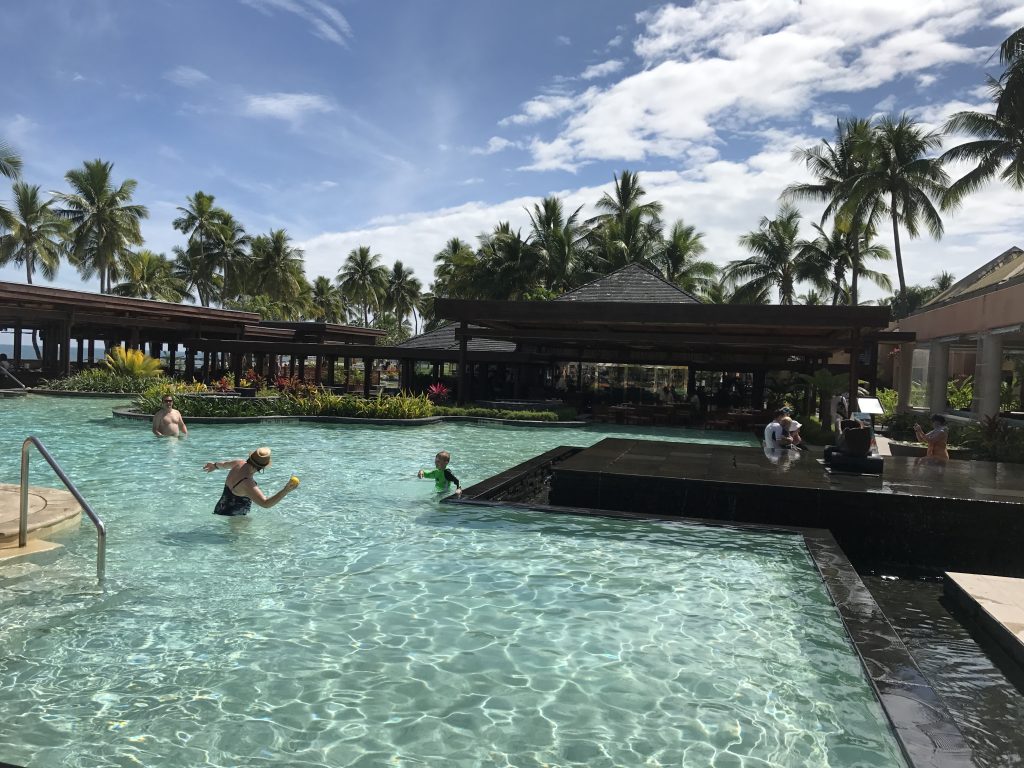
Sheraton Resort Fiji
2 Spending much time in Nadi – the town is interesting to see, walk around and experience, but it’s not really tourist designed or inspired. It’s still very much a local scene. You won’t find a lot of tourist merchandise and shops there, and the supermarkets and restaurants are very basic which will put off a lot of tourists. Nadi, and Fiji in general, are poor and not appealing to the eye of many Westerners. Head to the outside the main island for better water, scenic viewing, scuba diving and snorkeling.
Other things to know before you go
Crime – Fiji has some similarities with other poor countries like Brazil and South Africa that I’ve been to like some tin shacks and poor people, but the main difference is that there is little crime there. Suva has the most crime (and some drugs) while the other towns are largely free of it.
Living wage – many jobs in Fiji pay $3 to $3.50 FJD or about $1.50 to $1.75 an hour. There is definitely an overriding theme of poverty throughout Fiji, but you won’t find a happier, more friendly and polite bunch of people anywhere in the world.
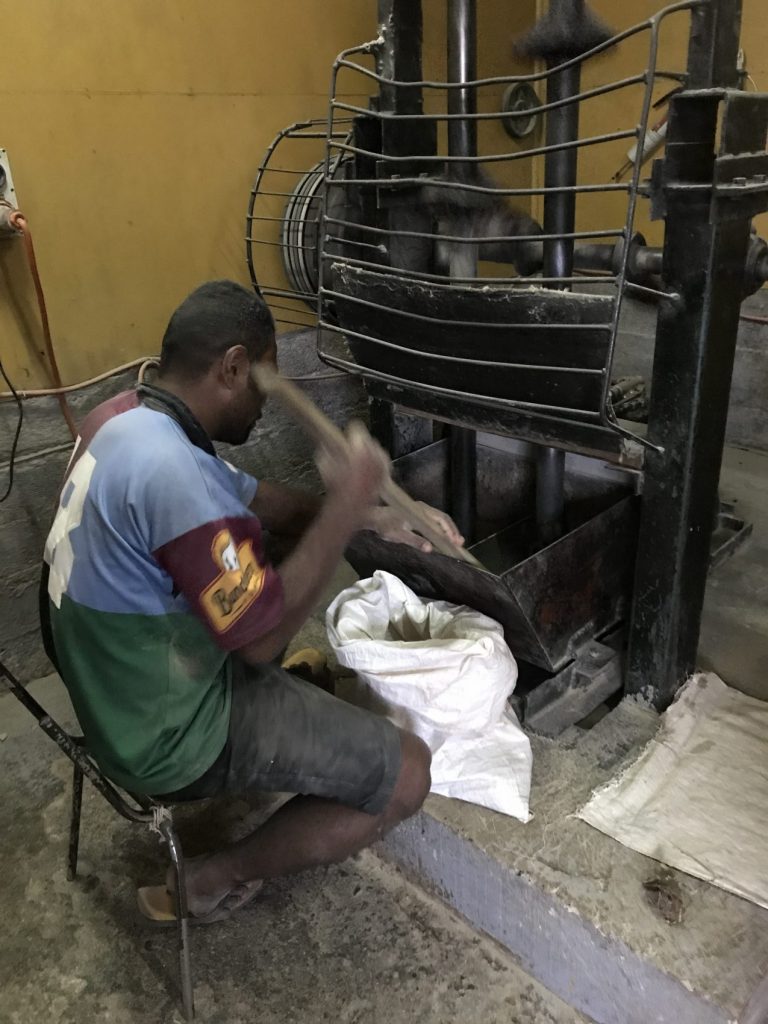
Making cava, the national plant based drink of Fiji
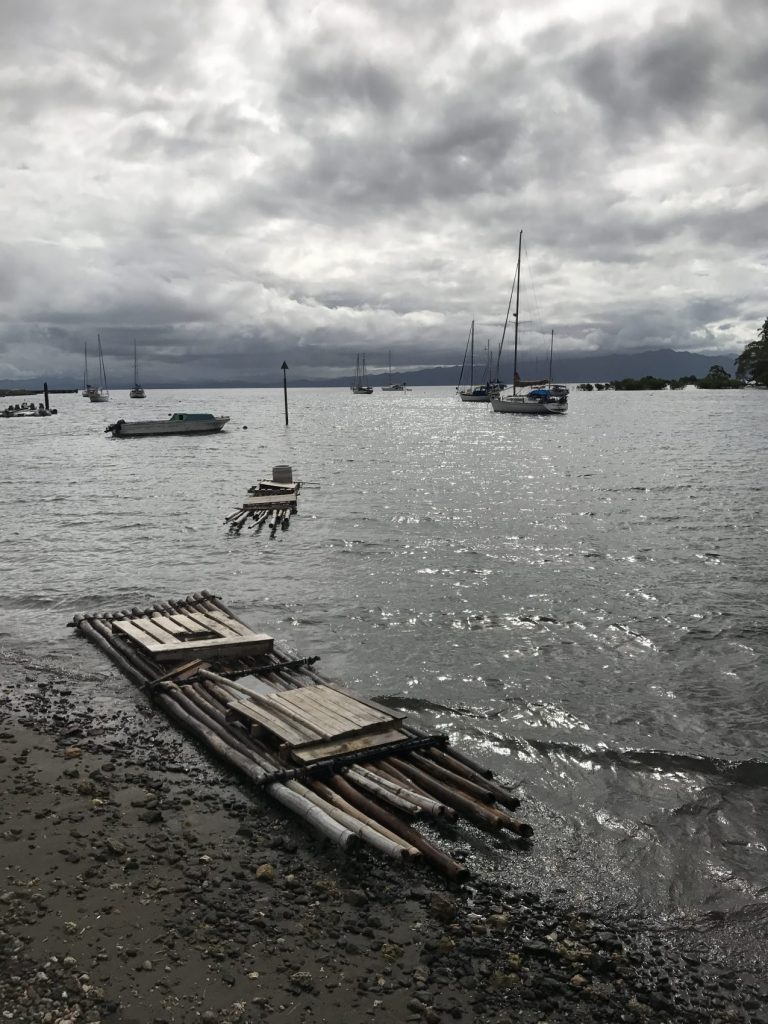
Poverty and wealth in Fiji
Fiji Airways – without notifying me, the airline cancelled all of my flights including 2 international flights. It’s a near miracle that I was able to board any of the planes. Thankfully I had a printed copy of my itinerary with confirmation numbers that could be linked with my name. Without that printed copy, things would have been much more difficult. Dealing with the airline after the issues occurred has been just as brutal too, even as a business class passenger. I wouldn’t recommend the airline, and hope to never fly it again.
People – Fiji has some of the nicest people that you’ll meet anywhere in the world. The country is largely quite poor, with Minimum wage set at $2.32 Fijian dollars (or roughly $1.14 US). The average annual wage in Fiji is $14,460 US per year. You’ll see people on rafts made of wood poles tied together out in the water trying to catch their dinner meal, right next to a group of large yachts. Even though wages are low and poverty abounds, the people are smiling, laughing, eager to help, and seem as happy as any people anywhere in any place the world.
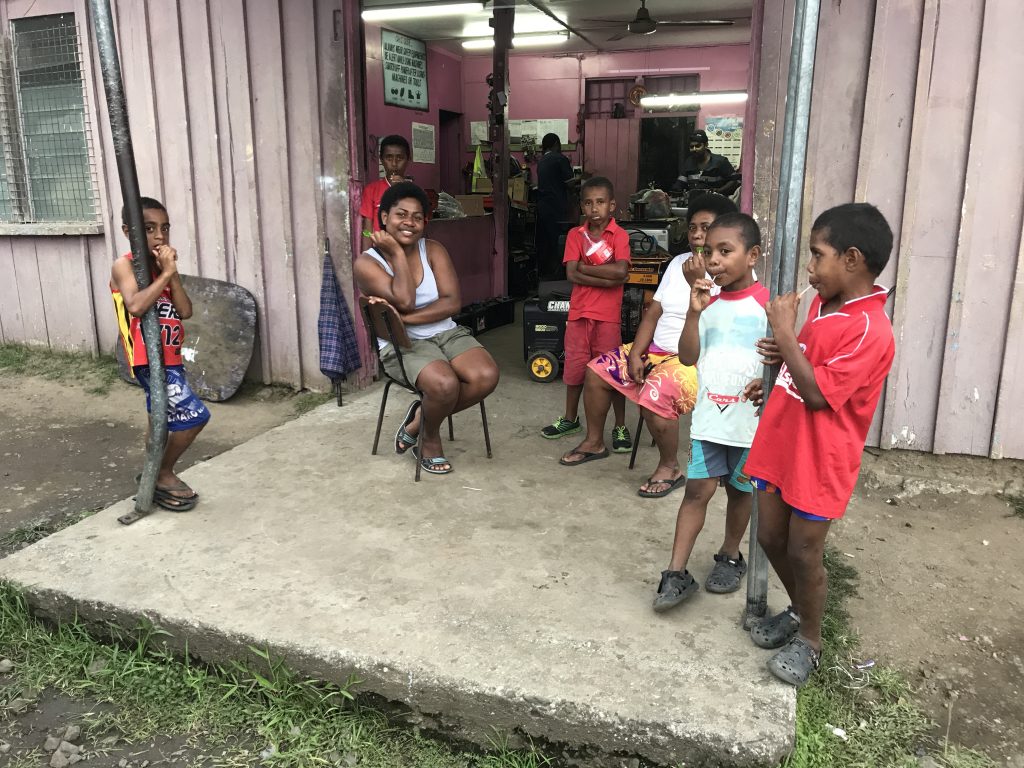
Happy living’ in Fiji
Summary
After visiting Fiji, I’m not really sure why that is. The waters and scuba diving around Fiji can be beautiful and quite pristine, but I believe there many are better exotic destinations out there. I doubt I’ll return to Fiji, but it was cool to see and experience it.
